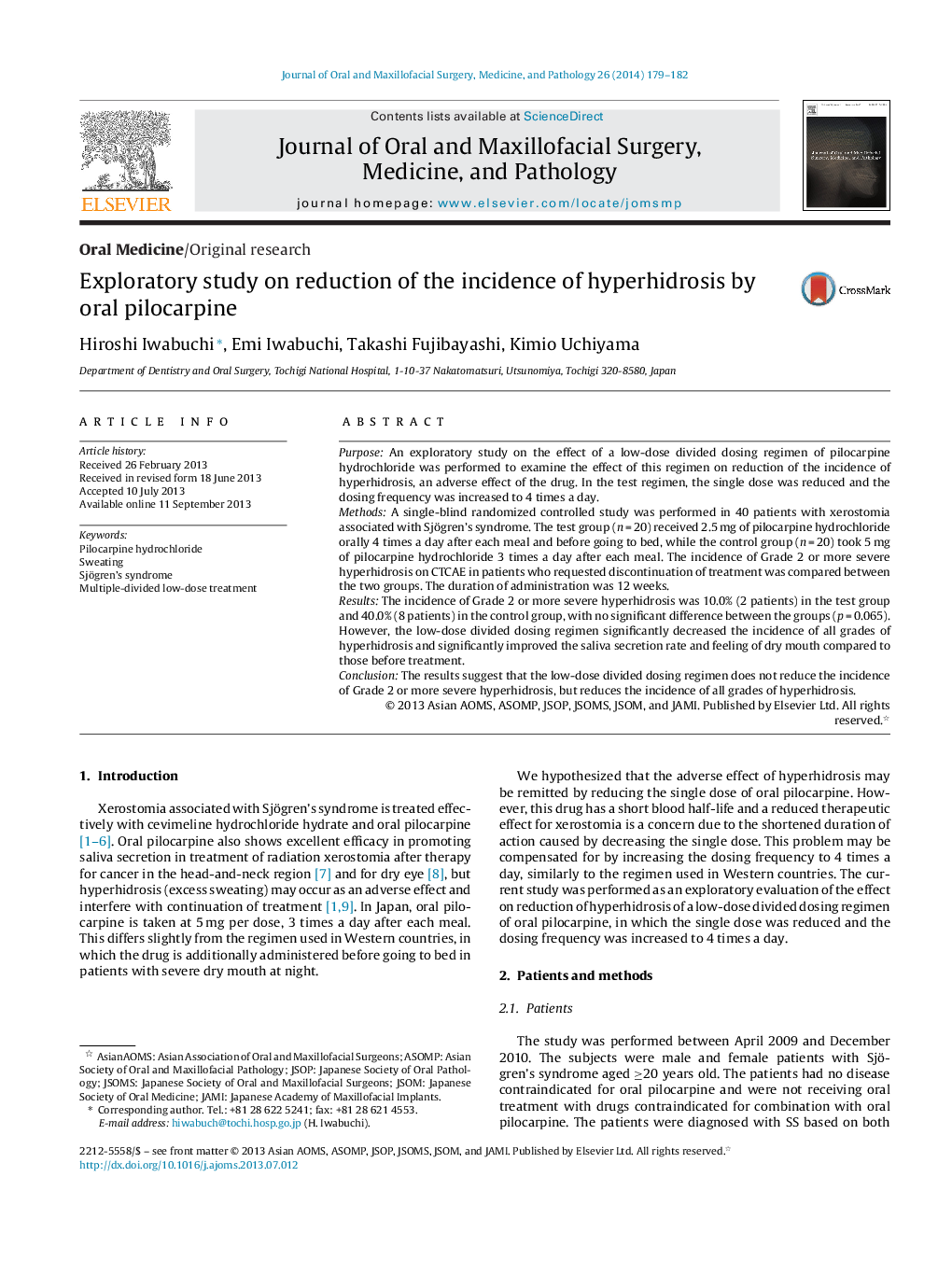| Article ID | Journal | Published Year | Pages | File Type |
|---|---|---|---|---|
| 3159405 | Journal of Oral and Maxillofacial Surgery, Medicine, and Pathology | 2014 | 4 Pages |
PurposeAn exploratory study on the effect of a low-dose divided dosing regimen of pilocarpine hydrochloride was performed to examine the effect of this regimen on reduction of the incidence of hyperhidrosis, an adverse effect of the drug. In the test regimen, the single dose was reduced and the dosing frequency was increased to 4 times a day.MethodsA single-blind randomized controlled study was performed in 40 patients with xerostomia associated with Sjögren's syndrome. The test group (n = 20) received 2.5 mg of pilocarpine hydrochloride orally 4 times a day after each meal and before going to bed, while the control group (n = 20) took 5 mg of pilocarpine hydrochloride 3 times a day after each meal. The incidence of Grade 2 or more severe hyperhidrosis on CTCAE in patients who requested discontinuation of treatment was compared between the two groups. The duration of administration was 12 weeks.ResultsThe incidence of Grade 2 or more severe hyperhidrosis was 10.0% (2 patients) in the test group and 40.0% (8 patients) in the control group, with no significant difference between the groups (p = 0.065). However, the low-dose divided dosing regimen significantly decreased the incidence of all grades of hyperhidrosis and significantly improved the saliva secretion rate and feeling of dry mouth compared to those before treatment.ConclusionThe results suggest that the low-dose divided dosing regimen does not reduce the incidence of Grade 2 or more severe hyperhidrosis, but reduces the incidence of all grades of hyperhidrosis.
